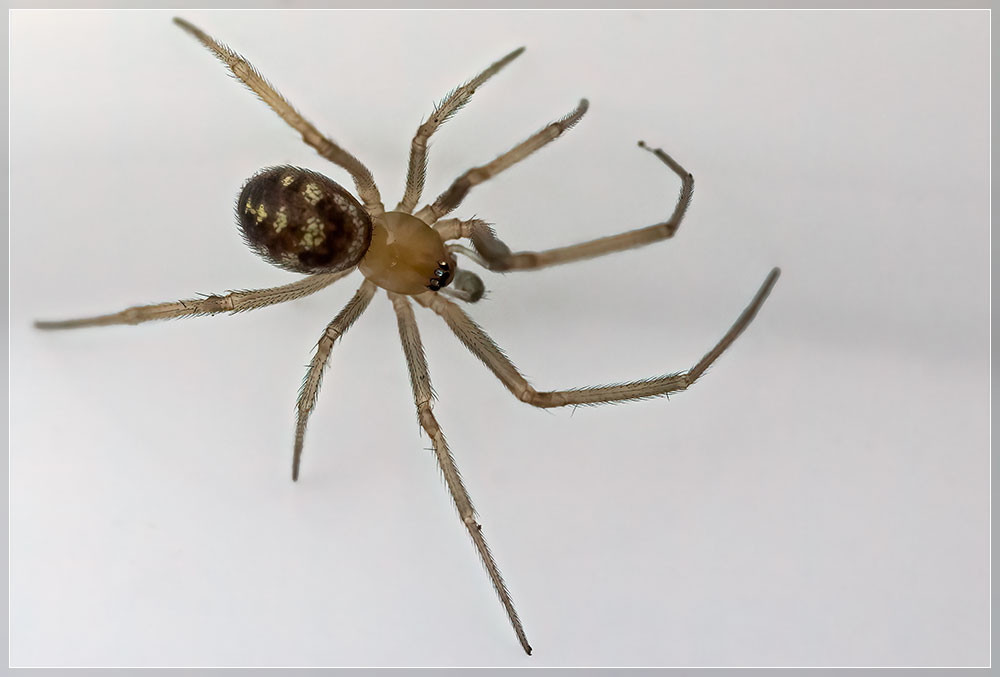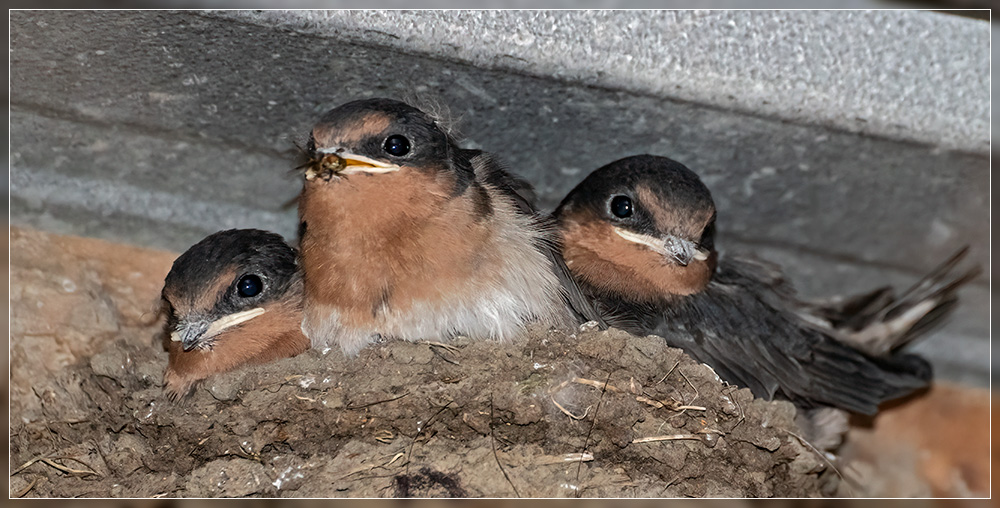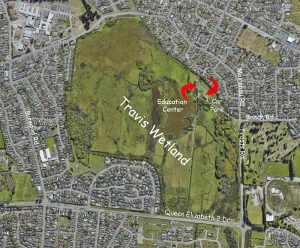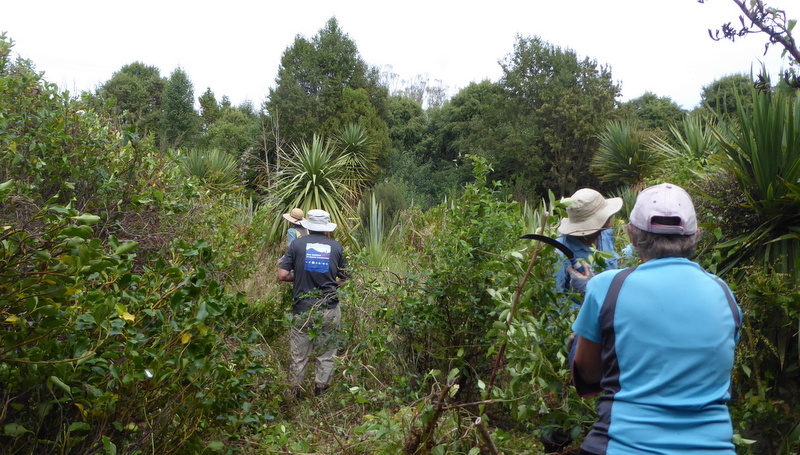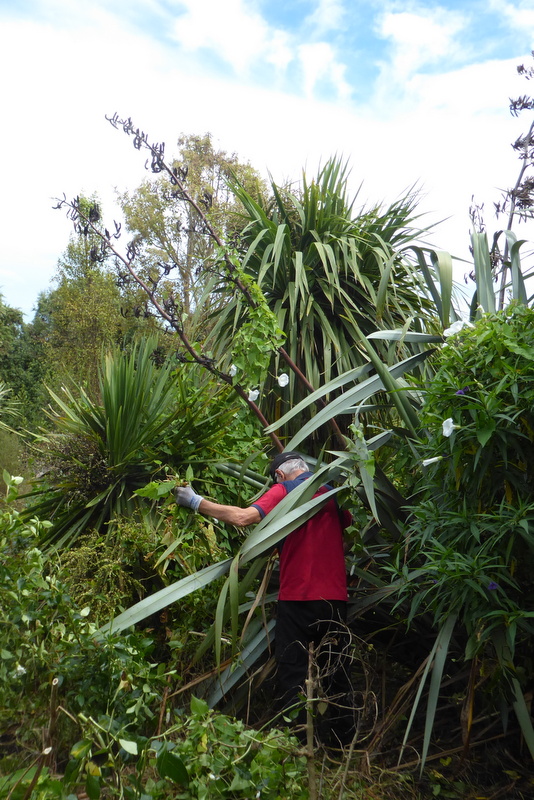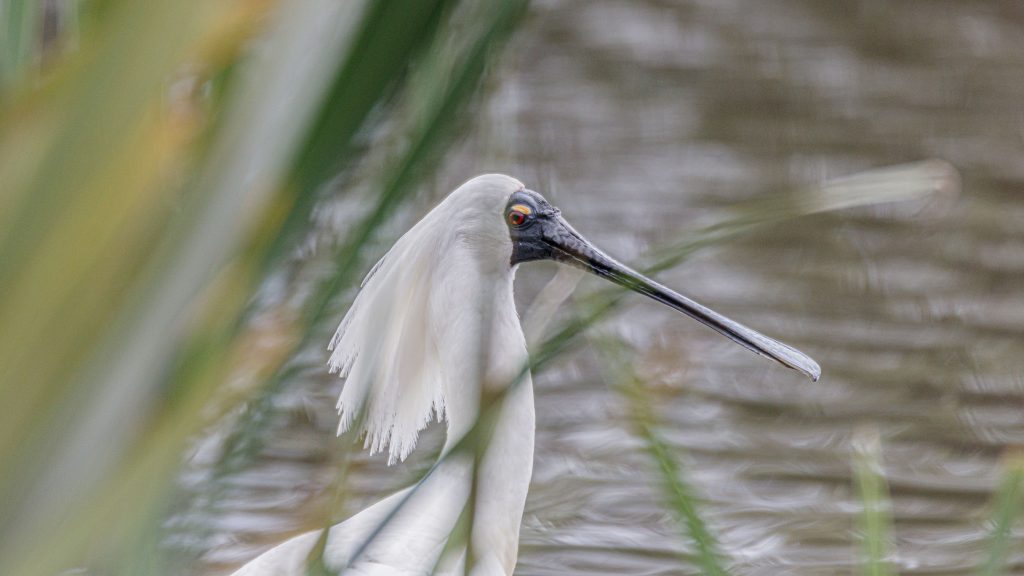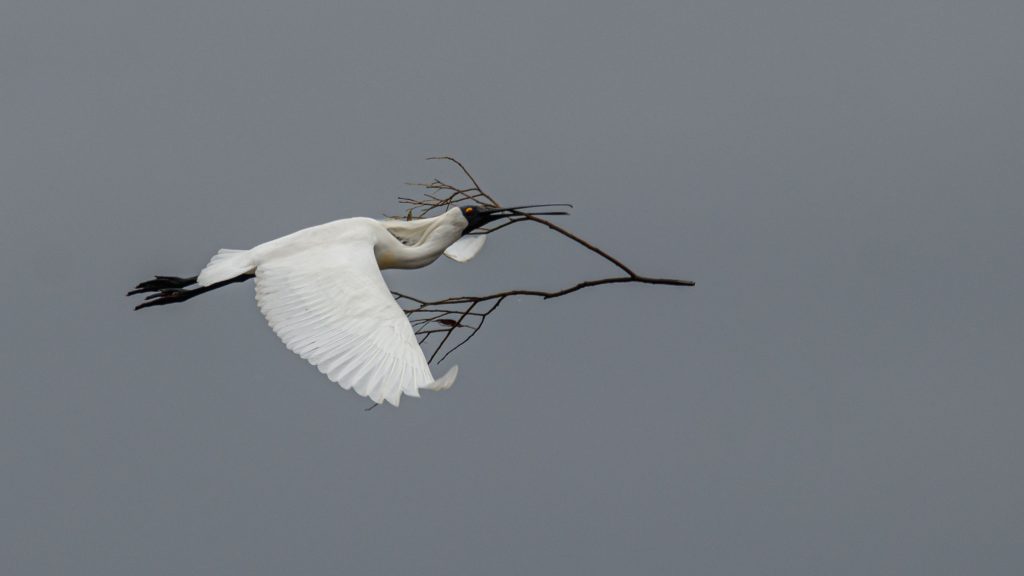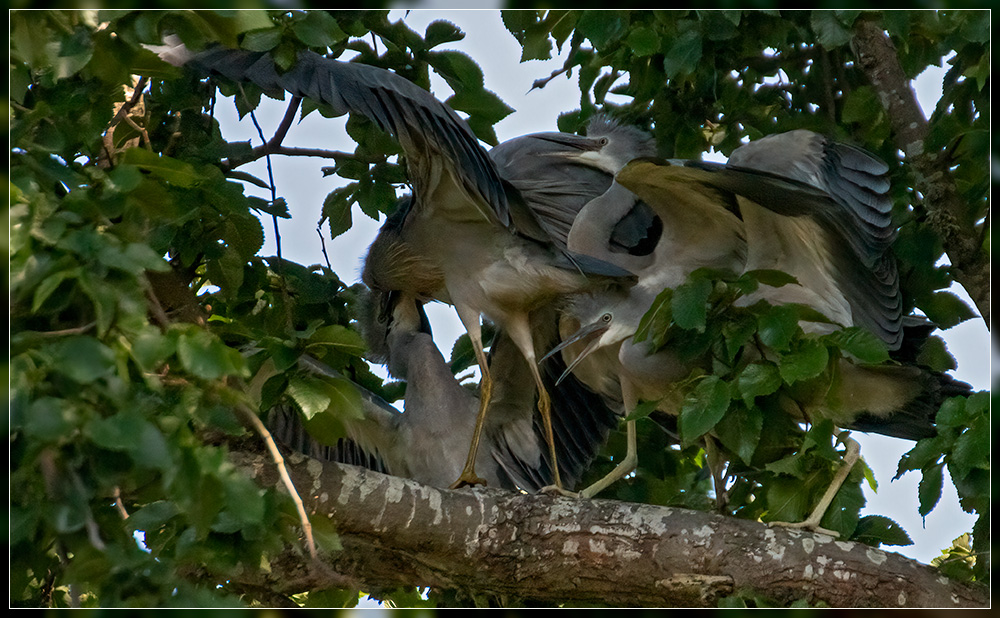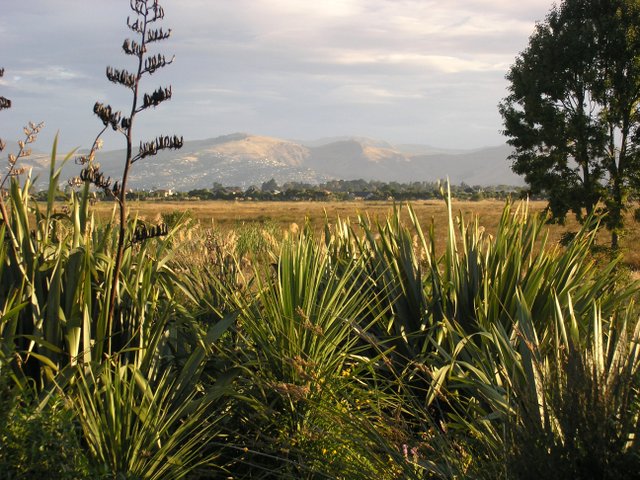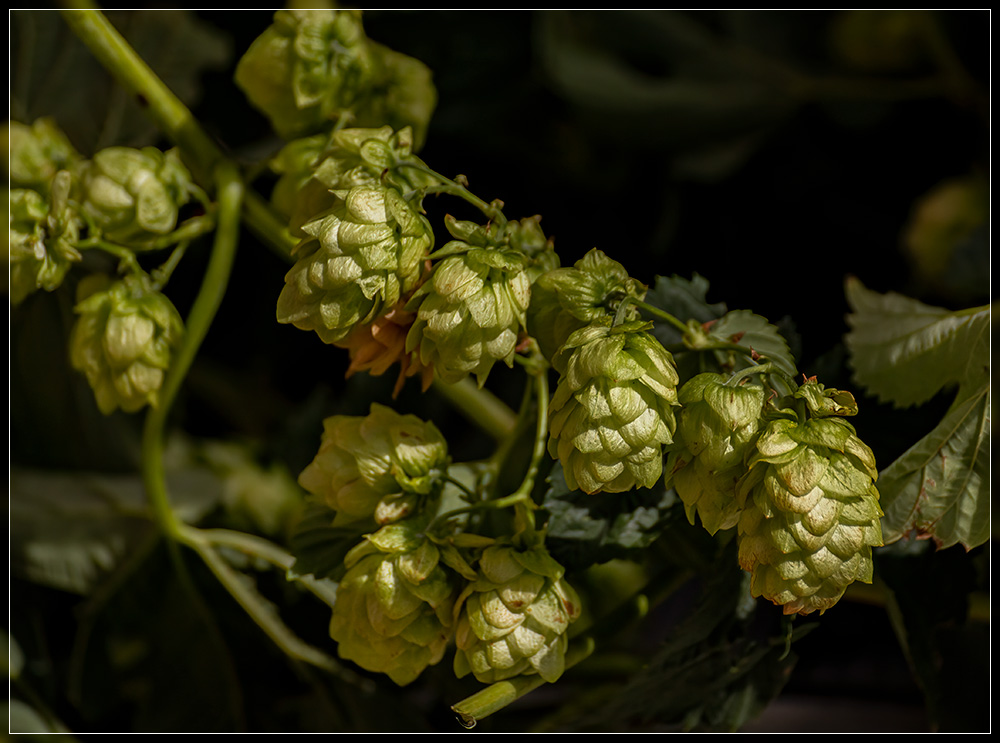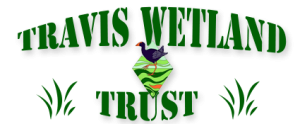 |
Work Day Reminder, March 19 2022
The next monthly work day will be from 9.00am – noon this coming Saturday.
Please scan the QR code at the door of the Education Centre or fill out a contact tracing form. Please let us know if you subsequently come down with Covid and could have been infectious at the time of the work day. Presentation of a Covid vaccine pass is not required. Morning tea will be structured to avoid close contact.
On the work day I’m not sure what we’ll be doing but I suspect we will be releasing plants somewhere around the wetland. If you arrive late there will be a notice on the Education Centre door saying where we have gone.
All tools provided. It may be wet underfoot, so gumboots are advised. If you don’t own any we do have some for loan. Please bring your own gloves.
Latest News
Report on Last Work Day, 19 February
It was a warm and muggy morning for 16 keen volunteers to mount an attack on the triffid-like weed growth along the Beach Road entrance footpath.
As usual for this time of year our main enemy was convolvulus. Many shrubs were completely engulfed by this climber, which also reached up into taller trees. It was satisfying to release the plants beneath, though some had developed strange bent-over shapes. Tōtara, mataī and coprosma seemed to benefit most from weed removal.
Other weeds removed included nightshades, mallow, willowherb, hemlock and burdock, with its large rhubarb-like leaves. Unfortunately our clothing acted as a seed spreading device for some of these species.
There were some dead plants at this site. As well as competition with weeds, the plants have to endure water-logging or drying out depending on season and weather conditions. On this day there were several very wet areas following recent downpours.
It wasn’t all bad news as some plants looked very healthy. Porcupine plants (Melicytus alpinus) were showing off their white berries before they fell to the ground. A native nettle (Urtica ferox) had most of its leaves munched away by yellow admiral caterpillars, and we could see the pupae of these hanging from the stems.
The morning ended with some well-earned drinks and nibbles outside the Education Centre. Thanks everyone.
Update from the January workday at Inwoods Road entrance. The plants are looking very healthy and many have grown over the last month. Wednesday volunteers recently spent a morning removing small weeds growing close to the plants. Professional weed-busters will tackle larger weeds in the open spaces to give the plants space to grow.
Article: Sue Britain, Images: Dave Evans
Kōtuku-ngutupapa, Royal Spoonbills, Platalea regia
These beautiful birds, with their brilliant white feathers and spoon shaped bills, have been creating a lot of excitement amongst Trust members, birders and photographers. The maximum number of birds seen roosting over the summer was 18.
This is the first breeding colony at Ōruapaeroa, Travis wetland and also for the Little Cormorants (Kawau paka) that joined them in the same tree. Both species nest in colonies, in trees overhanging water. At Travis they have chosen a visible but safe location in trees surrounded by a moat of water. In this case the trees are the exotic crack willow, which will provide suitable sites until native trees are of a suitable size.
A spoonbills did attempt to build nests in the same tree in February last year but these failed, so it’s really exciting to see them return and succeed. First mating in the past season was observed in September 2021. There were 8 – 10 nests with 6 – 8 chicks successfully fledged and only 1 known to have been lost.
Large flocks of spoonbills are often seen on the Ihutai Estuary with their distinctive method of sweeping their beaks from side to side. They feed on invertebrates, fish and frogs.
The best place to observe them at Travis is from the cycleway/footpath on the corner of Travis and Frosts Rd, using binoculars or spotting-scope. Here is a delightful video of the colony taken by Trust board member John Dunlop.
The spoonbills are nesting at Travis as a result of the collective hard work of the partnership between Travis Wetland Trust, Christchurch City Council regional park rangers and contractors. This work includes creating habitat, planting natives, controlling exotic weeds and animal pest control.
Article: John Skilton, Image: John Dunlop
Pūweto, Spotless Crake, Porzana tabuensis and other bird news
The call of the secretive spotless crake has been heard several times this month, including 4 birds on one day. They prefer to stay in the cover of the Pukio , Carex secta in the peat swamp and are sometimes heard from the boardwalk. Spotless crake have been heard more often at Travis as the habitat has improved and we hope the birds are thriving.
White-faced heron also surprised us by nesting in the big elm tree by the education centre and successfully raising three young. Watching their first flights and landing back in the nest was very special.
This year there has been an outbreak of bird botulism at the oxidation ponds. Some birds have been rehabilitated and released at Travis, including, Australasian shoveler, paradise shell duck and grey teal.
Article : John Skilton and images: Grahame and John
Government welcomes call to action on World Wetlands Day
An item from the DoC website:
Date: 02 February 2022 Source: Office of the Minister of Conservation and Minister for the Environment
“We’ve lost 90 per cent of our wetlands since human habitation, which is one of the highest rates of loss in the world. We must protect what remains,” Environment Minister David Parker said.
“Strong protections along with our significant investment and efforts to restore and re-establish them, are an important part of the Government’s commitment to improve freshwater health and management. Protecting and restoring wetlands is a key aspect of the Government’s Essential Freshwater reforms.”
Recent consultation on the wetland regulations included options that recognise specific instances where some activities are necessary, like a quarry. There would continue to be strong protection through the policy of no further loss of wetland area or values. Any losses will need to be offset to ensure no net loss.
To mark World Wetland Day the Department of Conservation has published reports on five New Zealand Ramsar wetland sites.
“Wetlands provide numerous benefits including protecting and improving water quality, providing a rich habitat for taonga species, a hauanga kai (food gathering), as well as storing floodwater and maintaining surface water flow during dry periods,” Conservation Minister Kiri Allan said.
Read the rest of the article on the DoC website.
Contractors Working at Travis Wetland
Contractors retained by the Christchurch City Council have been very busy at Ōruapaeroa, Travis Wetland over the summer.
Wai-Ora Landscapes have completed their willow sapling control work in the peat swamp and have got to most of the willows emerging from the raupo. It’s hot, strenuous work out in the middle of the swamp where there’s no solid ground and no shade from the sun. We’re grateful to them for preventing further spread of grey willow that would turn Travis into a willow forest, given half a chance. They have also been doing biosecurity work removing Giant Willow Herb plants from the southern paddocks and parts of the Tōtara/Mataī forest. I hope they are winning the battle against what has the potential to become a serious pest at Ōruapaeroa and other local Christchurch reserves.
Keystone Ecology have controlled the infestation of hops near the Beach Rd entrance to the wetland. They have also released the plants in the Trees for Canterbury one millionth tree planting near the Beach Rd car park and released the Waitākiri School plantings at the SW edge of Travis near Clarevale Park. The ample rainfall over the summer has been good for sustaining the native plantings, but also used to their advantage by the weeds.
The summer students employed by the CCC have been out many mornings drilling and poisoning the larger willows adjacent to Frosts and Beach Rds.
Article: Dave Evans, Image: Grahame
Recent Images from Grahame
